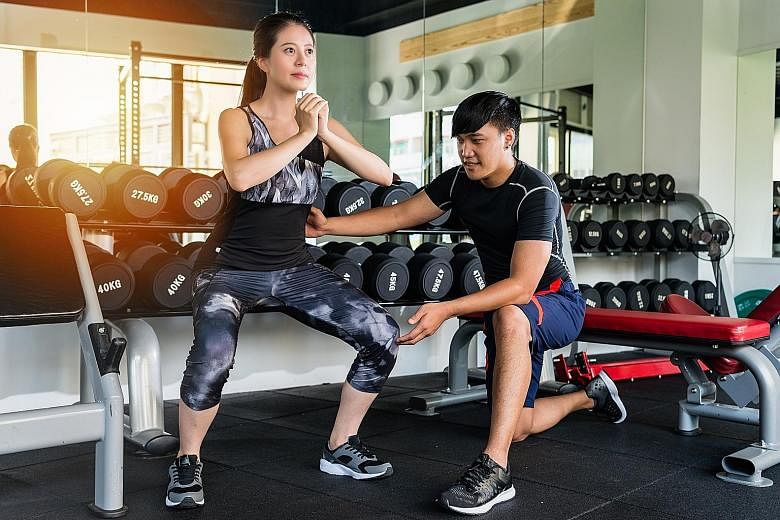Warming up properly, the right weights and a balanced stance are crucial if you want to get the most out of squats and avoid injury - and these are just the basics.
WARMING UP IS KEY
Going straight into squats, particularly if you have a sedentary job and therefore tight hip flexors and inactive glutes, can be a recipe for disaster, warns Fran Whitfield, head trainer at F45 Vauxhall, a central London gym.
She advises targeting the ankles, hamstrings, adductors, hip flexors and glutes in the warm-up.
Laura Jamieson, a physiotherapist, suggests two to five minutes on a rowing machine: "This is good for squats as it requires the same explosive power through the legs."
Yoga movements such as the Z sit and the lizard and pigeon poses are also options to try, as well as bridges, side planks and clams.
Both Whitfield and Jamieson advise working up to using a resistance band for more glute activation.
MASTER THE BASICS
Although correct technique can differ slightly by type of squat, Ben West, a personal trainer and ambassador for Science in Sport, a sports nutrition company, says to keep the feet symmetrical; mimic sitting down on a low chair when initiating the squat; and resist any flaring of the ribcage when driving back up.
DON'T GO TOO HEAVY TOO SOON
A common mistake beginners make is starting with too heavy a weight. "Leave the ego at the door and start with a weight that ensures your form is perfect first," says Whitfield.
Jamieson recommends only increasing weights by 5 -10kg to maintain technique.
If you find you can no longer control your movement or form, such as not being able to stop your knees from collapsing in, cut the weight.
VARY YOUR STANCE AND WEIGHT
A study last year examining different squat stances concluded that extremely wide or narrow stances should be avoided due to the large movements of the knees and hips required.
Standing with feet shoulder width apart and feet angled at 20 degrees was recommended, but the paper's author, Silvio Lorenzetti, of the Swiss Federal Institute of Sport Magglingen, stresses the importance of switching it up from time to time so as to train different parts of the muscles.
"If your goal is to build strength, you should be working on fewer repetitions with more weight," says West. "If it is performance-based, you may want to add less weight and work on pushing out of the squat with more force and speed."
DITCH THE RUNNING SHOES
"Do not wear spongy, soft trainers that will rock and move when you are squatting," says Jamieson.
She advises weightlifting shoes that have a hard platform and a heel raise.
Whitfield agrees that specialist shoes will provide support, stability and increased ankle mobility.
"You want to achieve the most stable base for yourself and performing the movement in running trainers, which have a padded sole, heel and lots of flexibility, will limit your ability to ground your weight."
THE GUARDIAN

